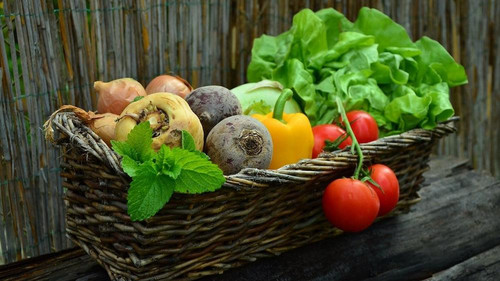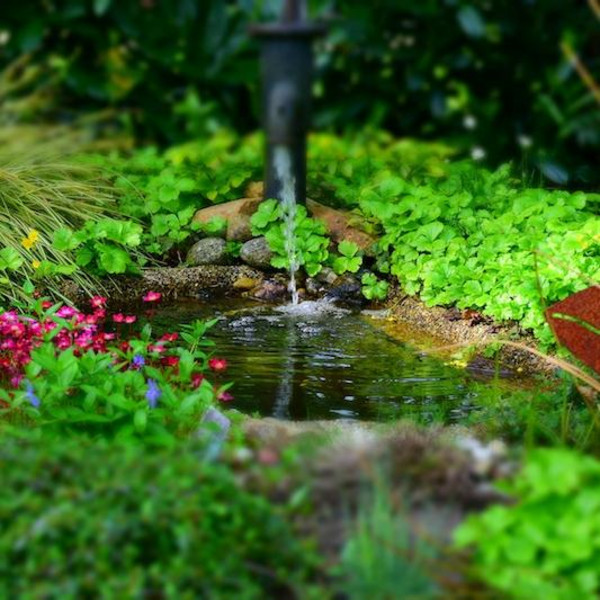Many gardeners start over again every year to lay out and plan their garden. A sustainable and natural alternative is offered by the permaculture garden, which forms a closed cycle, is self-sustaining for a long time and means relatively little care for the gardener after extensive planning. A permaculture garden offers free development for both humans and nature. Resilient and well-functioning ecosystems are mimicked in such a garden, creating wild oases where each element present has a variety of important functions that the gardener takes into account.
What does permaculture mean?

The term permaculture, derived from the English term “permanent (agri)culture”, means something like “permanent agriculture or culture”. Since the 1970s, this method has been significantly influenced by the Australian Bill Mollison, who is regarded as the father of permaculture. Independent of Mollison, the Japanese Masanobu Fukuoka also developed a similar principle.
Principles and Goals
Basically, the principle of permaculture is about creating your own stable and sustainable ecosystem, which is modeled on natural processes. Last but not least, the responsible use and perception of valuable natural resources such as water is an important aspect.
In the holistic principle of permaculture, natural and closed cycles as well as the consideration of all functions of individual elements are in the foreground. The principles established by Mollison are:
“Earth Care” – Caring for our earth
“People Care” – caring for people
“Fair Share” – The fair sharing and limitation of consumer goods
These principles show that the principle is no longer only applied in the agricultural context, but also in the social context and in other areas of life.
The aim is to develop and maintain a networked and multifunctional ecosystem. Existing resources should be used efficiently and their consumption and energy consumption reduced.
Gardening in harmony with nature – The advantages of a permaculture garden
Biodiversity, i.e. the diversity of species, is the focus in a permaculture garden. The mixed culture makes it possible to plant plants next to each other that mutually benefit from their proximity. Resources such as water are conserved through clever planning and mulching, for example. Due to the resilience of the functioning ecosystem and the awareness that every living being within it takes on several important functions, the use of chemicals can be dispensed with entirely. For example, fungi can settle here, which play an important role as intermediaries between the plants.
Relatively little work for the gardener
With proper planning, a permanent culture requires little work because it is a closed loop system. Time-consuming tasks such as weeding, trimming plants and tilling the soil are almost completely eliminated. When creating such a garden, for example, the soil is only loosened, but not dug up. Among other things, this preserves valuable microorganisms in the soil. Beneficial insects such as wild bees, bumblebees or earthworms should also settle and feel comfortable in the permaculture garden. Flower meadows, companion plants in the vegetable patch, piles of leaves, dead wood or an insect hotel attract them. The compost heap is also an important part of the permaculture garden, as it can be used later, for example, to improve the soil.
High yield in a relatively small area
In a permaculture garden, the available space is used as best as possible. Vegetables or fruit can also be grown at different heights. Climbing plants, such as pumpkins, are guided upwards and thus offer space for underplanting.
The zones of the permaculture garden
A permaculture garden can be roughly divided into five different zones. The focus is on the human being. The further away the zone is from the center, the less care should be given to it. There are also zones that are planted more densely than others – the same applies here: the closer the zone is to people, the more densely it is likely to be planted.
Zone 0: residential area: house or apartment
Zone 1: kitchen garden, herb garden, most maintenance intensive
Zone 2: vegetable garden, possibly with greenhouse and small animal husbandry
Zone 3: Agriculture, fruit and nut trees, animal husbandry
Zone 4: Pasture land, fruit and nut trees, wood supply
Zone 5: wildly growing natural zone, living and resting area for animals and humans, no maintenance
Please note: The division into zones is only intended to serve as a guide, because of course, depending on the size of the garden and other circumstances, you have to weigh up the extent to which each zone can be created and whether some may have to be left out.
Permaculture in Practice – How do I start?

If you want to create your own permaculture garden, there are a few things to consider beforehand. Remember that you are creating this garden for the long term and do not plan it anew every year. It is therefore worth taking the time to figure out what you want to grow and plant in your garden. Of course, you can make changes over time if you wish.
Take a close look at the area that will later be home to your permaculture garden. where does the sun shine Where is penumbra or shade? Are there wind-protected and non-wind-protected areas? Does your garden have a slope that should be considered for future watering?
You should also consider a soil analysis, because a good soil is already half the battle for a magnificent garden. If you have already used the garden area for growing vegetables, green manure is also a suitable way to improve the soil quality in your bed.
When planning, you should make a true-to-scale sketch. This also helps you with the planning and variety of small intensively used and larger extensively used areas.
Think about which vegetables, which herbs and other perennial or hardy plants you want for your garden. Of course, depending on the weather in winter, it can always happen that one or the other plant does not survive. You can then swap them out for the next season or try out new varieties.
You should also consider keeping animals in your yard. Ducks or chickens help keep pests at bay. Plan their forage plants and shelters accordingly.
Last but not least, you should think about a structure. Which plants are good neighbors? How can you use potential watercourses? Would you like to collect rainwater and lead it to the bed? Would you like to create a hill bed or a herb spiral or would you rather build a raised bed? A pond or a greenhouse can also be useful. For example, the greenhouse allows you to overwinter sensitive plants or grow young plants, while the pond can be an excellent heat store.
As you can see, there are no limits to your creativity! The beauty of permaculture gardens is that each garden is completely individual. You will not be able or willing to implement all of the suggestions we have made. It is important that you consciously think about the design and observe the rules of mixed cultivation and crop rotation.
